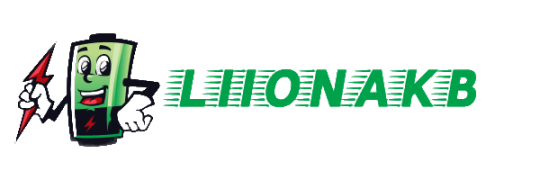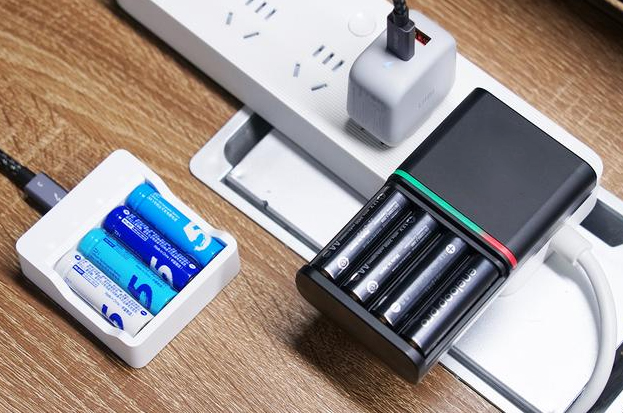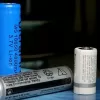Guide to Li-ion Rechargeable Battery
1. tell me a bit more about rechargeable batteries, how are they different from primary or disposable batteries?
Rechargeable batteries are the same sizes (AA, AAA, C, D, Sc and 9V) and are designed for everyday use as the disposable or primary batteries people use. The advantage of rechargeable batteries is that they can be recharged and reused up to a thousand times and are generally far more powerful than conventional disposable batteries from leading brands. The fact that rechargeable batteries can be used over and over again means a huge saving over their useful life. NiMH batteries that can be recharged are highly sought after due to their eco-friendliness. Once charged, these rechargeable batteries can be used in the same way as your previous disposable batteries of the same size.
2.Why should I buy rechargeable NiMH batteries?
Better performance in the operation of electronic devices and huge cost savings are the two main reasons for buying rechargeable NiMH (nickel-metal hydride) batteries. They can be recharged up to 500-1000 times and last longer than alkaline or NiCd batteries. NiMH batteries are ideal for most consumer devices such as digital cameras, gameboys, CD players, RC vehicles, PDAs, portable radios, flash units and many other high power consumption devices. A set of relatively inexpensive NiMH batteries can save you from buying thousands of disposable alkaline batteries.
3.Why should I buy rechargeable NiMH batteries?
NiMH batteries have the following advantages:
Better performance for electronic devices with high power consumption.
Large capacity for longer device operation. NiMH batteries last 2-4 times longer than disposable alkaline batteries or NiCd batteries.
The battery boasts a prolonged lifespan, capable of undergoing 500 to 1,000 charge/discharge cycles.
Extremely low battery cost per unit of device operation (e.g. each photo taken or each hour a CD is played), resulting in very low consumable costs for your electronics.
Stable performance due to flat discharge curve. NiMH battery remains at high voltage for 80% of the usage cycle.
No memory effect for easy charging and use.
Environmentally friendly – no toxic chemicals
4.What is the meaning of the "mAh" capacity of a battery?
The mAh capacity specification refers to the available storage capacity of a given battery. A battery with a capacity rating of 1800 mAh could provide 1800 mA of current for one hour. Higher mAh values for the same battery type generally mean longer run times. This does not apply when comparing different battery types. This means that you cannot predict how long your electronic device will run based on the capacity rating of a battery alone. If you’re powering high-consumption electronic devices like digital cameras, computer peripherals, or portable music players, an alkaline battery will deliver only a small fraction of its rated capacity. For example, AA alkaline batteries typically have a capacity of over 2,500 mAh, while AA NiMH batteries have a capacity of only 1,200 to 2,000 mAh. But when it comes to powering an electronic device like a digital camera, the NiMH batteries can often run the device three or four times as long. Even comparing the capacity values of similar battery types is often not possible because different manufacturers may measure battery capacity in slightly different ways. A NiMH or NiCd battery is likely to be much closer to its rated capacity when running high power devices. Alkaline batteries have a high rated capacity, but can only deliver their full capacity when power is slowly consumed. This means that a NiMH battery with a rated capacity of 1,200 mAh can take many more photos than an alkaline battery with a rated capacity of 2,800 mAh.
5.How environmentally friendly are rechargeable NiMH batteries?
Rechargeable batteries have the best environmental balance. Using rechargeable batteries massively reduces household waste. Worldwide, 15 billion conventional batteries are thrown away every year, all of which end up in landfills. Rechargeable batteries can be used over and over again, greatly reducing the impact of disposable batteries on the environment.
6.How long can a rechargeable battery last?
Let’s say you currently use regular disposable batteries for your portable CD player and replace the batteries once a week. For simplicity, let’s assume that a year has 52 weeks. You can charge your NiMH batteries 500 times, which means the NiMH battery will last 500 charges / 50 weeks = 10 years. This means that the same batteries you buy today, you could still be using 10 years from now! Chances are, once you choose rechargeable batteries, you will never use disposable batteries again.





Leave a reply